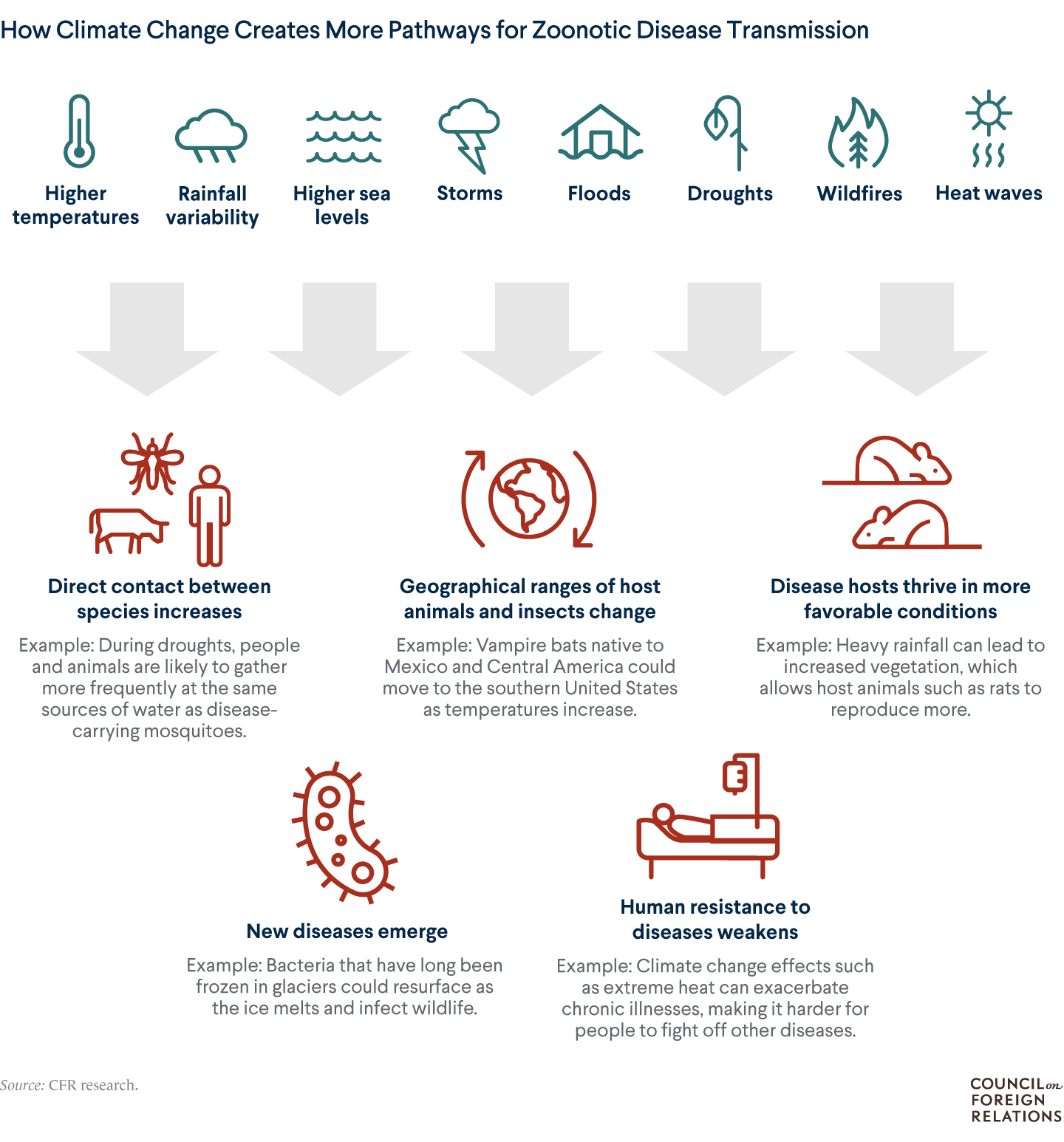Fungal Infections: A Rising Threat In A Warming World

Table of Contents
The Impact of Climate Change on Fungal Growth
Warmer temperatures and increased humidity are creating ideal breeding grounds for fungal spores, leading to a wider geographical spread and increased infection rates of fungal infections. These seemingly innocuous microorganisms are thriving in the changing climate.
Increased Temperatures and Humidity
- Higher temperatures accelerate fungal growth and reproduction. Many fungi, including Aspergillus and Candida, exhibit exponential growth rates as temperatures rise above optimal levels for human health.
- Increased humidity provides the necessary moisture for fungal spores to germinate and colonize new environments.
- Regions experiencing significant increases in both temperature and humidity, such as parts of Southeast Asia and the Amazon basin, are seeing a corresponding rise in fungal infections. This is particularly true for opportunistic fungal infections in immunocompromised individuals.
Changes in Rainfall Patterns
Altered rainfall patterns contribute significantly to the expansion and severity of fungal diseases.
- Flooding can create stagnant water sources ideal for fungal propagation, increasing the risk of waterborne fungal infections.
- Droughts, on the other hand, can stress plants, making them more susceptible to fungal pathogens. This leads to crop losses and further impacts food security, potentially leading to malnutrition and weakening immune systems—increasing vulnerability to fungal infections.
- These fluctuating rainfall patterns disproportionately affect vulnerable populations in developing countries with limited access to healthcare and sanitation.
Expanded Geographic Ranges
Warmer temperatures are enabling fungi to expand their geographical ranges into previously uninhabitable regions.
- Certain fungal species are migrating to higher altitudes and latitudes as temperatures rise, exposing new populations to potentially dangerous pathogens.
- The expansion of Coccidioides, a fungus causing valley fever, into new areas in the United States is a prime example of this phenomenon.
- The public health infrastructure in newly affected regions may lack the resources and expertise to effectively manage these emerging fungal threats.
Increased Susceptibility to Fungal Infections
Climate change indirectly increases our susceptibility to fungal infections by weakening our immune systems and exacerbating existing health problems.
Weakened Immune Systems
- Climate change worsens existing respiratory illnesses, such as asthma and allergies, which can compromise immune function, making individuals more vulnerable to fungal infections.
- Increased frequency and intensity of heat waves can lead to dehydration, heatstroke, and cardiovascular stress, all of which can suppress the immune system.
- Malnutrition, often exacerbated by climate change-induced crop failures, further weakens the body’s ability to fight off fungal infections.
Antibiotic Resistance
The rise of antibiotic resistance is another significant concern, further complicating the treatment of fungal infections.
- Climate change can indirectly contribute to antibiotic resistance by increasing the prevalence of bacterial infections, leading to greater antibiotic use and the selection of resistant strains.
- This increased prevalence of antibiotic resistance diminishes our treatment options, making fungal infections harder to manage and potentially increasing mortality rates.
- The development of novel antifungal drugs and strategies to combat antibiotic resistance is crucial in the face of climate change-induced shifts in infectious disease patterns.
The Economic Burden of Fungal Infections
The escalating incidence of fungal infections places a significant economic burden on healthcare systems and agricultural sectors.
Healthcare Costs
- The increased prevalence of fungal infections translates into higher healthcare expenditures related to diagnosis, treatment, hospitalization, and long-term care.
- The costs associated with managing complex and potentially fatal invasive fungal infections can be substantial, placing a strain on healthcare resources, particularly in resource-limited settings.
- Funding for research and development of new antifungal therapies is crucial to address this growing economic challenge.
Agricultural Losses
- Fungal diseases are a major cause of crop failures worldwide, significantly impacting food security and farmers' livelihoods.
- Climate change-induced shifts in temperature and humidity create more favorable conditions for fungal plant pathogens, leading to decreased crop yields and increased economic losses for farmers.
- These losses ripple through the food supply chain, affecting food prices and impacting consumer access to affordable and nutritious food.
Prevention and Mitigation Strategies
Addressing the rising threat of fungal infections requires a multifaceted approach that combines public health initiatives, climate change mitigation, and research efforts.
Public Health Initiatives
- Improved sanitation and hygiene practices can significantly reduce the risk of fungal infections.
- Public awareness campaigns educating individuals about the risk factors and prevention strategies are essential.
- Early detection programs and effective diagnostic tools are crucial for prompt treatment and improved patient outcomes.
Climate Change Mitigation
- Reducing greenhouse gas emissions through transitioning to renewable energy sources and adopting sustainable practices is critical to slowing the rate of climate change.
- Protecting and restoring natural ecosystems, such as forests and wetlands, can help regulate climate and reduce the risk of fungal outbreaks.
- Implementing sustainable agricultural practices can reduce the vulnerability of crops to fungal diseases.
Research and Development
- Increased funding for research into fungal pathogenesis, diagnostics, and new antifungal drugs is crucial.
- Developing innovative diagnostic tools that enable rapid and accurate identification of fungal pathogens is essential for timely and effective treatment.
- Investigating novel drug targets and exploring alternative therapeutic strategies can expand our arsenal against resistant fungal infections.
Conclusion
The alarming rise in fungal infections is inextricably linked to climate change. The resulting health consequences, economic burdens, and threats to food security demand immediate and decisive action. Understanding the connection between climate change and rising rates of fungal infections is crucial for developing effective prevention and treatment strategies. Let's work together to combat this growing threat by supporting research efforts, advocating for climate change mitigation, and implementing preventative measures to minimize our risk. Ignoring the threat of fungal infections, in a world increasingly shaped by climate change, is not an option.

Featured Posts
-
 The Saint On Itv 4 Episode Listings And Air Times
May 26, 2025
The Saint On Itv 4 Episode Listings And Air Times
May 26, 2025 -
 Deciphering The Hells Angels Facts And Misconceptions
May 26, 2025
Deciphering The Hells Angels Facts And Misconceptions
May 26, 2025 -
 Nouvelle Strategie Pour La Rtbf Couverture Des Diables Rouges Et Engagement Des Fans
May 26, 2025
Nouvelle Strategie Pour La Rtbf Couverture Des Diables Rouges Et Engagement Des Fans
May 26, 2025 -
 Mathieu Van Der Poels Reign Three Paris Roubaix Wins In A Row
May 26, 2025
Mathieu Van Der Poels Reign Three Paris Roubaix Wins In A Row
May 26, 2025 -
 From The Track To The Streets F1 Fashions Influence
May 26, 2025
From The Track To The Streets F1 Fashions Influence
May 26, 2025
